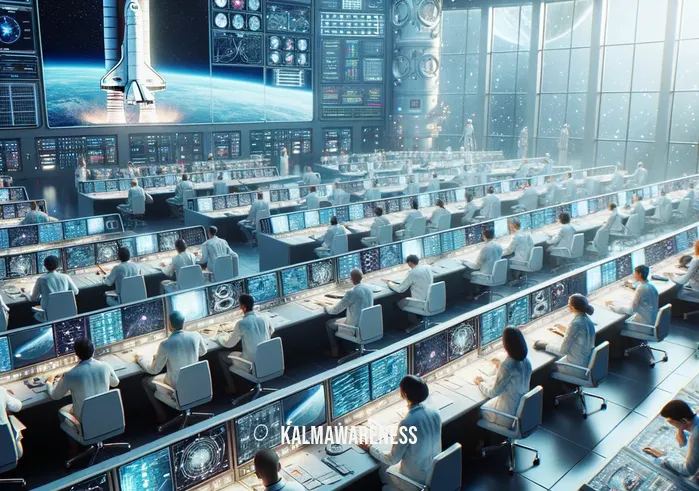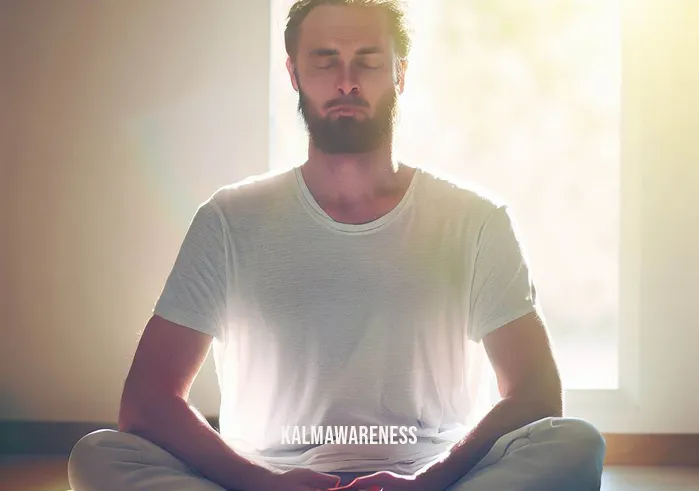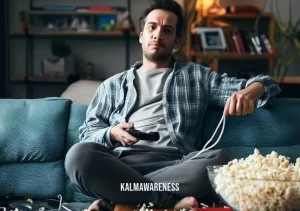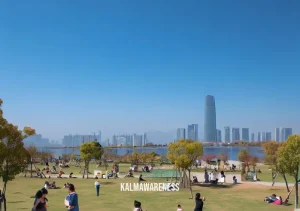Embracing the Space: Understanding Anxiety in Our Lives
In our fast-paced world, anxiety seems to have become an unwelcome but frequent visitor in many of our lives. It creeps in, unannounced, turning our personal space into a battleground of worries and what-ifs. But what if we could transform this space into something more positive and empowering?
Recognizing Anxiety’s Presence
Let’s start by acknowledging that feeling anxious isn’t unusual. It’s a natural response to the uncertainties and challenges we face daily. Whether it’s about meeting deadlines, managing relationships, or coping with life’s unexpected turns, anxiety often signals our engagement with the world around us. But when does this become overwhelming? How do we know when the space for anxiety in our lives is taking up more room than it should?
The Physical and Emotional Landscape
Anxiety isn’t just a mental state; it manifests physically too. Your heart races, your palms get sweaty, and there’s a knot in your stomach that just won’t go away. Emotionally, you might feel on edge, irritable, or just constantly worried. Recognizing these signs is the first step towards reclaiming your space.
Creating a Mindful Space
Mindfulness can be a powerful tool in addressing anxiety. It’s about being present in the moment and acknowledging your thoughts and feelings without judgment. This practice can create a sense of calm in the midst of the storm. Techniques like mindful breathing or anchoring meditation can be particularly helpful. They anchor you in the present, preventing anxiety from spiraling.
The Role of Meditation and Mindfulness
Meditation and mindfulness practices have been shown to reduce symptoms of anxiety significantly. Engaging in activities like floating meditation or exploring methods like EMDR meditation can provide a much-needed reprieve from the constant chatter of an anxious mind.
Lifestyle Adjustments for Anxiety Management
Making small changes in your lifestyle can have a big impact on managing anxiety. This could include regular exercise, a balanced diet, or ensuring you get enough sleep. Sometimes, simply being aware of your body through practices like mindful movement sleep can make a difference.
The Power of Knowledge
Educating yourself about anxiety is also crucial. Understanding what it is, why it happens, and how it affects you can demystify the experience and make it less intimidating. Resources like The Mindfulness Prescription for Adult ADHD can offer valuable insights.
Concluding Thoughts: A Journey of Self-Discovery
As we wrap up this section, think of managing anxiety not just as a task, but as a journey of self-discovery. It’s about understanding yourself better, learning to cope with your emotions, and creating a space where you feel safe and in control. Remember, it’s okay to seek help when needed, and it’s okay to take your time to figure things out.
Curious to know more? How can we further customize our personal spaces to not just cope with, but thrive amidst anxiety? Stay tuned as we delve deeper into this in the next section.

Tailoring Your Space: Advanced Strategies for Managing Anxiety
Moving forward from our initial exploration of anxiety, let’s dive deeper into how we can actively tailor our personal space to better manage and live with anxiety. This section delves into advanced strategies, emphasizing how subtle changes and informed choices can significantly impact our mental well-being.
Transforming Environment for Emotional Equilibrium
The Power of Physical Space
Your physical environment plays a crucial role in how you experience and manage anxiety. It’s not just about the place where you live or work, but how it’s organized, decorated, and the kind of sensory experiences it offers. Consider incorporating elements that induce calmness, like soft lighting, comforting colors, or plants. Creating a dedicated space for relaxation or meditation can be incredibly beneficial.
A Table of Tranquility: Elements for a Calming Space
| Element | Description | Benefit |
|---|---|---|
| Soft Lighting | Dim, warm lighting | Reduces eye strain and creates a soothing ambiance |
| Comfort Colors | Pastel or earth tones | Elicits feelings of calmness and relaxation |
| Greenery | Indoor plants | Improves air quality and reduces stress levels |
| Quiet Corner | Dedicated meditation or relaxation space | Provides a retreat for mindfulness practices |
Emotional Landscaping: Mindfulness in Daily Activities
Integrating Mindfulness into Routine
It’s not just about setting aside time for mindfulness; it’s about integrating it into your daily routine. This could be as simple as practicing mindful breathing while waiting in line or being fully present when eating or walking. The key is to find moments throughout your day to ground yourself in the present.
Mindfulness and Movement
Combining mindfulness with physical activity, like mindful movement sleep or yoga, can be especially effective. These practices not only improve physical health but also provide mental clarity and stress relief.
Advanced Mindfulness Techniques
Beyond basic practices, there are more advanced techniques that can be explored for deeper anxiety management. These include practices like EMDR meditation or mindfulness-based stress reduction programs. Engaging in these practices can provide new perspectives and coping mechanisms for those dealing with persistent anxiety.
Digital Detox: Managing Technology-Induced Anxiety
The Impact of Screen Time
In today’s digital age, our screens can sometimes amplify our anxiety. It’s crucial to be mindful of our digital consumption. Setting boundaries for screen time, especially before bed, can reduce anxiety and improve sleep quality.
Utilizing Technology Mindfully
While technology can be a source of stress, it can also be a tool for managing anxiety. Apps for meditation, relaxation, and sleep can be incredibly helpful. It’s about finding a balance and using technology in a way that supports your mental health.
Concluding Thoughts: A Journey Towards Balance
As we conclude this section, remember that managing space for anxiety is a personal journey. It’s about finding what works for you and making small, consistent changes. Your environment, daily routines, and even the technology you use can all be tailored to support your mental health.
Looking ahead, what challenges might we face in maintaining this balance? In the final section, we will explore potential obstacles in managing anxiety and strategies to overcome them, ensuring that the space for anxiety in our lives remains under our control.

Navigating the Future: Solidifying Your Space for Anxiety
As we conclude this journey through understanding and managing the space for anxiety, it’s crucial to look ahead. How do we sustain the progress we’ve made and continue to evolve our strategies to keep anxiety manageable in the ever-changing landscape of our lives?
The Ongoing Journey of Self-Understanding
Embracing Change and Challenges
Life is dynamic, and so is our experience with anxiety. As we grow and encounter different stages in life, our coping mechanisms need to adapt. It’s a continuous process of learning, adapting, and growing.
Future-Proofing Your Anxiety Management Strategies
- Stay Informed: Keep up with the latest research and strategies on managing anxiety. Books and articles, like Meditation for Dummies, can provide valuable insights and new techniques.
- Personal Growth: Regular self-reflection and mindfulness practices can help you stay attuned to your mental health needs.
- Community Support: Engage with support groups or forums to share experiences and learn from others.
Integrating New Technologies and Approaches
Leveraging Digital Tools
With advancements in technology, new tools for managing anxiety are constantly emerging. From apps that track mood and stress levels to virtual reality experiences designed for relaxation, the future offers exciting possibilities for enhancing our mental health toolkit.
Holistic Health: A Key to Long-Term Wellbeing
Incorporating a holistic approach to health, which includes physical, mental, and emotional wellbeing, is essential for maintaining a balanced space for anxiety. This means paying attention to nutrition, exercise, sleep, and emotional connections.
Maintaining a Flexible and Adaptive Mindset
Learning from Life’s Experiences
Each challenge we face teaches us something new about managing our anxiety. Embracing a learning mindset, where we view challenges as opportunities for growth, can transform the way we handle anxiety.
Concluding Thoughts and Call-to-Action
As we wrap up, remember that managing anxiety is a personal journey that evolves over time. It requires patience, understanding, and a willingness to adapt.
Interested in further exploration? Dive deeper into practices like anger mindfulness or explore relaxation techniques through resources like floating meditation. The journey towards managing anxiety is continuous, and there’s always more to learn and explore.
Key Takeaways from Our Journey:
- Recognize and acknowledge the physical and emotional manifestations of anxiety.
- Create a supportive physical and emotional environment for managing anxiety.
- Integrate mindfulness and meditation into your daily routine.
- Stay informed and adaptable to new strategies and technologies for anxiety management.
- View challenges as opportunities for growth and learning in your journey with anxiety.
In conclusion, the space for anxiety in our lives doesn’t have to be a source of constant struggle. With the right strategies, support, and mindset, it can become a space of growth, learning, and profound self-understanding.




